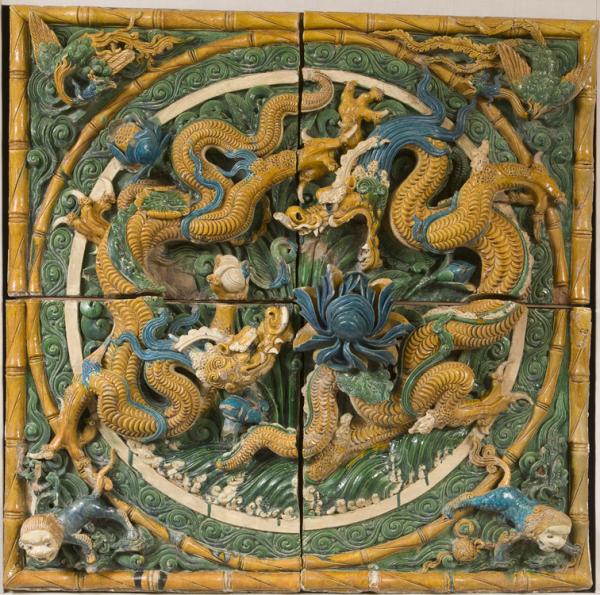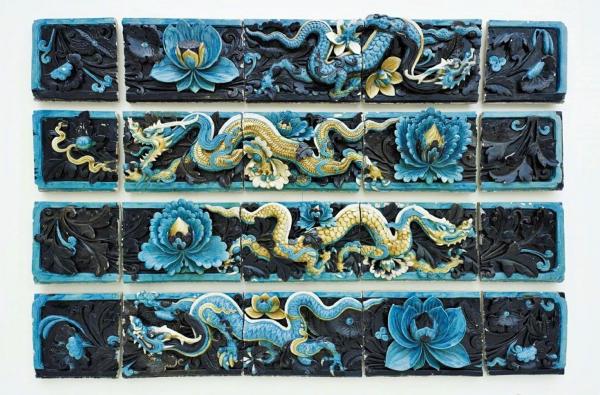2023-2-6
我们的老祖宗发明了瓷器,但是没有发明玻璃。虽然在清代也把做玻璃玩得团团转,烧制出很多惹人喜爱的料器鼻烟壶和宫廷用具,但和普通老百姓的日常生活相去甚远。唯一能让小老百姓看得见也摸得着的东西,大概就是被当作建材用的琉璃建筑构件了。
这种琉璃花砖,在位于台南市的台湾历史博物馆中有许多收藏。该博物馆的介绍中说:
在我们村子里的博物馆中,也藏有四块法华琉璃墙壁,和国内的九龙壁,是一样的类型。
这样的琉璃壁墙,在威斯康星大学博物馆中,也还有几块双龙戏珠的图桉:

Qiao family workshop - This Spirit Wall originally formed part of an architectural structure that stood in front of the entrance of a temple or sacred precinct in China. The central placement of spirit walls served to prevent the entry of evil spirits, which were believed to travel only in straight lines. Composed of four separate square pieces of hollow earthenware, the wall is decorated on the front surface with lively dragon imagery in relief that is brilliantly colored in green, turquoise, yellow, black, and cream glazes. The unglazed back of the wall bears an incised inscription arranged in four vertical lines that give the date, the reign-era, and the makers—twenty apprentice clay workers. Also on the back of the spirit wall is an inscription written in black ink that provides information about the place of production.
最为着名的,是大英博物馆第叁十叁号展厅收藏的那二十块四条整龙的明代琉璃龙壁,让国人耿耿于怀了许久。因为这几块,是一位叫何鸿卿的香港富商买了来无偿捐献的。

|
